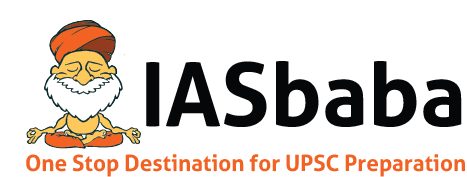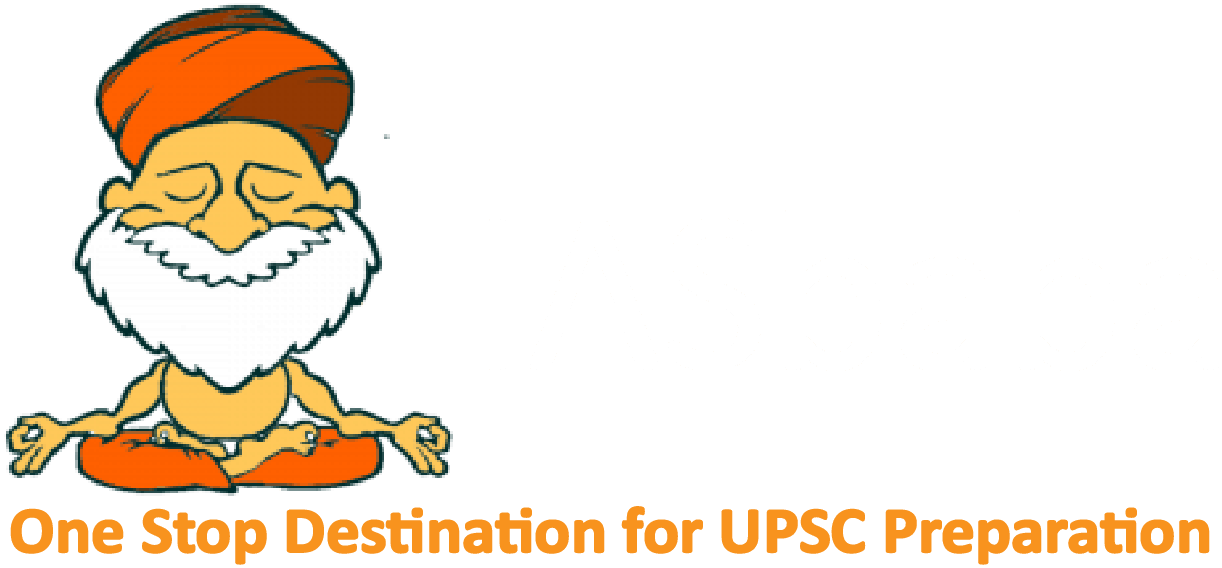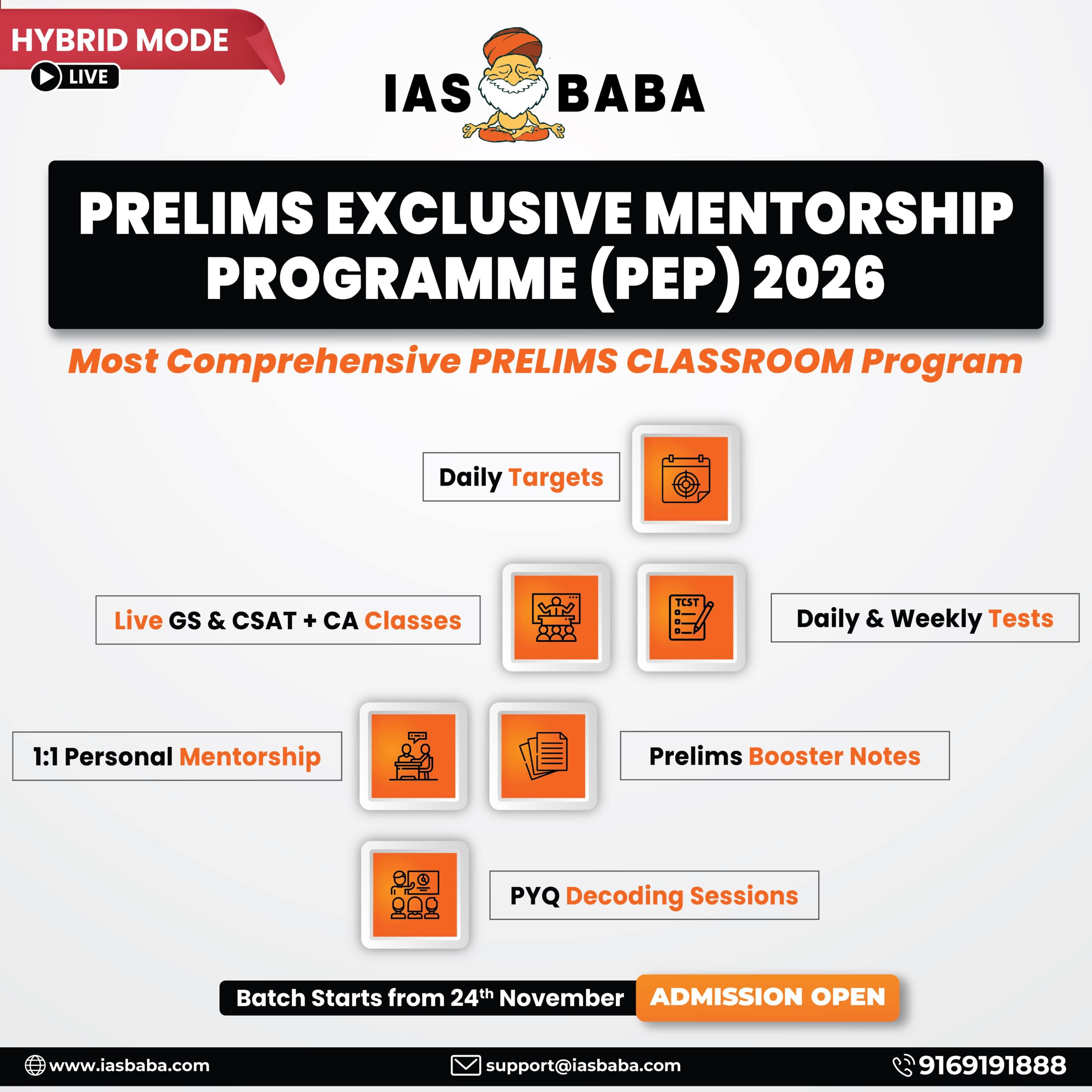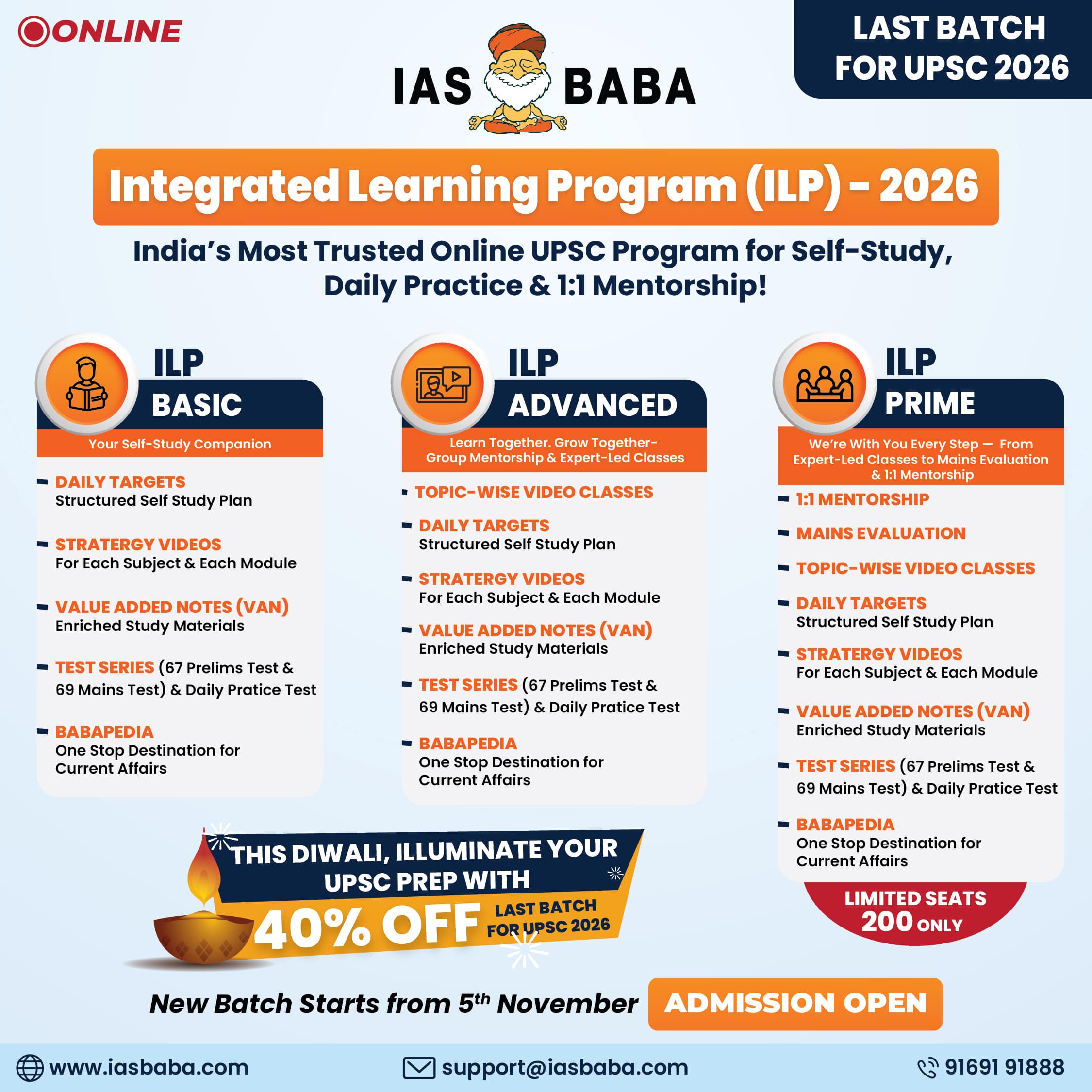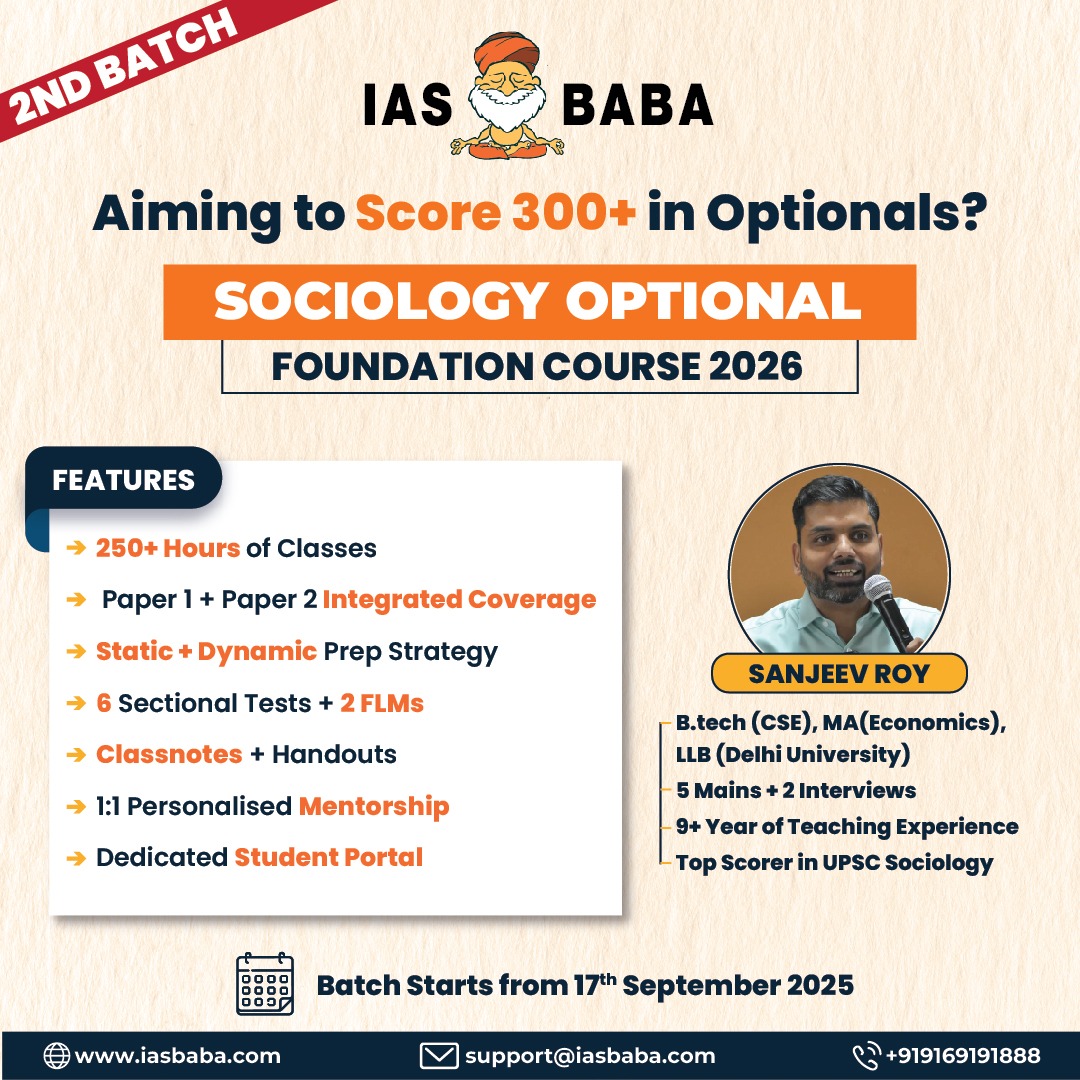IASbaba Daily Prelims Quiz
For Previous Daily Quiz (ARCHIVES) – CLICK HERE
The Current Affairs questions are based on sources like ‘The Hindu’, ‘Indian Express’ and ‘PIB’, which are very important sources for UPSC Prelims Exam. The questions are focused on both the concepts and facts. The topics covered here are generally different from what is being covered under ‘Daily Current Affairs/Daily News Analysis (DNA) and Daily Static Quiz’ to avoid duplication. The questions would be published from Monday to Saturday before 2 PM. One should not spend more than 10 minutes on this initiative.
Gear up and Make the Best Use of this initiative.
Do remember that, “the difference between Ordinary and EXTRA-Ordinary is PRACTICE!!”
Important Note:
- Don’t forget to post your marks in the comment section. Also, let us know if you enjoyed today’s test 🙂
- After completing the 5 questions, click on ‘View Questions’ to check your score, time taken, and solutions.
Test-summary
0 of 5 questions completed
Questions:
- 1
- 2
- 3
- 4
- 5
Information
To view Solutions, follow these instructions:
- Click on – ‘Start Test’ button
- Solve Questions
- Click on ‘Test Summary’ button
- Click on ‘Finish Test’ button
- Now click on ‘View Questions’ button – here you will see solutions and links.
You have already completed the test before. Hence you can not start it again.
Test is loading...
You must sign in or sign up to start the test.
You have to finish following test, to start this test:
Results
0 of 5 questions answered correctly
Your time:
Time has elapsed
You have scored 0 points out of 0 points, (0)
| Average score |
|
| Your score |
|
Categories
- Not categorized 0%
| Pos. | Name | Entered on | Points | Result |
|---|---|---|---|---|
| Table is loading | ||||
| No data available | ||||
- 1
- 2
- 3
- 4
- 5
- Answered
- Review
-
Question 1 of 5
1. Question
-
Consider the following statements regarding the Small Satellite Launch Vehicle (SSLV):
-
SSLV is a two-stage solid propulsion launch vehicle with an additional velocity trimming module for precise orbital insertion.
-
SSLV has a payload capacity of around 500 kg to Low Earth Orbit and is designed for on-demand, cost-effective launches of small satellites.
Which of the above statements is/are incorrect?
Correct
-
Solution: (a)
Explanation:
- Statement 1: SSLV has three solid stages and a liquid-propulsion-based Velocity Trimming Module (VTM). Hence the statement is incorrect
Statement 2: SSLV can carry ~500 kg to LEO and is designed for quick, low-cost, on-demand launches catering to the small satellite market. Hence the statement is correct
Incorrect
-
Solution: (a)
Explanation:
- Statement 1: SSLV has three solid stages and a liquid-propulsion-based Velocity Trimming Module (VTM). Hence the statement is incorrect
Statement 2: SSLV can carry ~500 kg to LEO and is designed for quick, low-cost, on-demand launches catering to the small satellite market. Hence the statement is correct
-
-
Question 2 of 5
2. Question
-
With reference to the Democratic Republic of the Congo (DRC), consider the following statements:
-
The DRC shares its longest international border with Angola.
-
The DRC is a landlocked country in Central Africa.
-
The DRC is traversed by the Equator, giving it both equatorial and tropical climates.
-
Lake Tanganyika forms part of the DRC’s eastern border.
How many of the above statements are correct?
Correct
-
Solution: (b)
Explanation:
- Statement 1: DRC’s longest border is with Zambia, not Angola. Hence the statement is incorrect
- Statement 2: DRC has a short Atlantic Ocean coastline (at Banana port), so it is not landlocked. Hence the statement is incorrect
- Statement 3: The Equator passes through the DRC, creating diverse climates. Hence the statement is correct
Statement 4: Lake Tanganyika forms part of its eastern border. Hence the statement is correct
Incorrect
-
Solution: (b)
Explanation:
- Statement 1: DRC’s longest border is with Zambia, not Angola. Hence the statement is incorrect
- Statement 2: DRC has a short Atlantic Ocean coastline (at Banana port), so it is not landlocked. Hence the statement is incorrect
- Statement 3: The Equator passes through the DRC, creating diverse climates. Hence the statement is correct
Statement 4: Lake Tanganyika forms part of its eastern border. Hence the statement is correct
-
-
Question 3 of 5
3. Question
-
With reference to cryptocurrencies, consider the following pairs:
Cryptocurrency Type/Category I. Bitcoin Payment Cryptocurrency II. Tether Stablecoin III. Monero Privacy Coin IV. Uniswap (UNI) Governance Token How many of the pairs given above are correctly matched?
Correct
-
Solution: (d)
Explanation:
- I. Bitcoin – Payment Cryptocurrency
- Bitcoin was the first cryptocurrency, designed mainly as a peer-to-peer payment system and digital money. This is correct
- II. Tether – Stablecoin
- Tether (USDT) is pegged to the US Dollar, making it a stablecoin aimed at reducing volatility. This is correct
- III. Monero – Privacy Coin
- Monero (XMR) uses advanced cryptographic techniques to ensure anonymity of sender, receiver, and transaction value. This is correct
- IV. Uniswap (UNI) – Governance Token
UNI token holders can vote on protocol changes, upgrades, and treasury decisions, making it a governance token in decentralized finance (DeFi). This is correct
Incorrect
-
Solution: (d)
Explanation:
- I. Bitcoin – Payment Cryptocurrency
- Bitcoin was the first cryptocurrency, designed mainly as a peer-to-peer payment system and digital money. This is correct
- II. Tether – Stablecoin
- Tether (USDT) is pegged to the US Dollar, making it a stablecoin aimed at reducing volatility. This is correct
- III. Monero – Privacy Coin
- Monero (XMR) uses advanced cryptographic techniques to ensure anonymity of sender, receiver, and transaction value. This is correct
- IV. Uniswap (UNI) – Governance Token
UNI token holders can vote on protocol changes, upgrades, and treasury decisions, making it a governance token in decentralized finance (DeFi). This is correct
-
-
Question 4 of 5
4. Question
-
Consider the following statements:
-
Geotagging is the process of converting descriptive addresses (like street names or landmarks) into geographic coordinates for mapping and analysis.
-
Geocoding involves attaching precise latitude and longitude coordinates to physical objects or digital content, making their location uniquely identifiable.
Which of the above statements is/are correct?
Correct
-
Solution: (d)
Explanation:
- The definitions have been interchanged incorrectly.
Geotagging
- Definition: Geotagging is the process of attaching geographical information—such as latitude, longitude, altitude, city, country, or place names—to digital content like photographs, videos, social media posts, or websites.
- Purpose: It helps in location identification, content organization, and enabling location-based services.
- Applications:
- Social media (e.g., Instagram, Facebook) to tag the location of posts.
- Photography and mapping for organizing images geographically.
- Location-based marketing and analytics.
- Disaster management and environmental monitoring.
- Example: A photo clicked in Mysore can have metadata like Latitude: 12.2958° N, Longitude: 76.6394° E.
Geocoding
- Definition: Geocoding is the process of converting human-readable addresses or place names into geographic coordinates (latitude and longitude), and vice versa (reverse geocoding).
- Purpose: It allows mapping, spatial analysis, and integration with GIS (Geographic Information Systems) applications.
- Applications:
- Navigation apps (Google Maps, GPS devices).
- Urban planning and route optimization.
- Location-based services and delivery systems.
- Emergency services to locate addresses quickly.
Key Difference
Aspect Geotagging Geocoding Purpose Attach location info to digital content Convert addresses ↔ geographic coordinates Input Digital content (photos, videos) Human-readable addresses or coordinates Output Location metadata Coordinates or address Common Use Case Social media, media organization GIS, navigation, mapping Incorrect
-
Solution: (d)
Explanation:
- The definitions have been interchanged incorrectly.
Geotagging
- Definition: Geotagging is the process of attaching geographical information—such as latitude, longitude, altitude, city, country, or place names—to digital content like photographs, videos, social media posts, or websites.
- Purpose: It helps in location identification, content organization, and enabling location-based services.
- Applications:
- Social media (e.g., Instagram, Facebook) to tag the location of posts.
- Photography and mapping for organizing images geographically.
- Location-based marketing and analytics.
- Disaster management and environmental monitoring.
- Example: A photo clicked in Mysore can have metadata like Latitude: 12.2958° N, Longitude: 76.6394° E.
Geocoding
- Definition: Geocoding is the process of converting human-readable addresses or place names into geographic coordinates (latitude and longitude), and vice versa (reverse geocoding).
- Purpose: It allows mapping, spatial analysis, and integration with GIS (Geographic Information Systems) applications.
- Applications:
- Navigation apps (Google Maps, GPS devices).
- Urban planning and route optimization.
- Location-based services and delivery systems.
- Emergency services to locate addresses quickly.
Key Difference
Aspect Geotagging Geocoding Purpose Attach location info to digital content Convert addresses ↔ geographic coordinates Input Digital content (photos, videos) Human-readable addresses or coordinates Output Location metadata Coordinates or address Common Use Case Social media, media organization GIS, navigation, mapping -
-
Question 5 of 5
5. Question
-
Consider the following indicators used in calculating the Multidimensional Poverty Index (MPI):
-
Nutrition
-
Child mortality
-
School attendance
-
Access to electricity
-
Employment status of household head
How many of the above are included in the MPI?
Correct
-
Solution: (c)
Explanation:
- The MPI uses 10 indicators across three dimensions:
- Health → Nutrition, Child mortality
- Education → Years of schooling, School attendance
- Standard of living → Cooking fuel, Sanitation, Drinking water, Electricity , Housing, Assets.
- Employment status is not an MPI parameter.
Incorrect
-
Solution: (c)
Explanation:
- The MPI uses 10 indicators across three dimensions:
- Health → Nutrition, Child mortality
- Education → Years of schooling, School attendance
- Standard of living → Cooking fuel, Sanitation, Drinking water, Electricity , Housing, Assets.
- Employment status is not an MPI parameter.
-
- Current Affairs Quiz, IAS Daily Current Affairs Quiz, IAS UPSC Current Affairs Quiz, IAS UPSC Prelims Quiz, IASbaba's Current Affairs Prelims Quiz, IASbaba's Daily Quiz, IASbaba's UPSC Quiz, Prelims Current Affairs Quiz, UPSC Current Affairs Quiz, UPSC Current Affairs Quiz IASbaba, UPSC Daily Current Affair Quiz, UPSC IAS Daily Quiz
